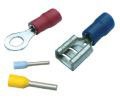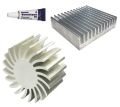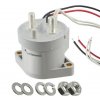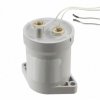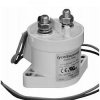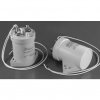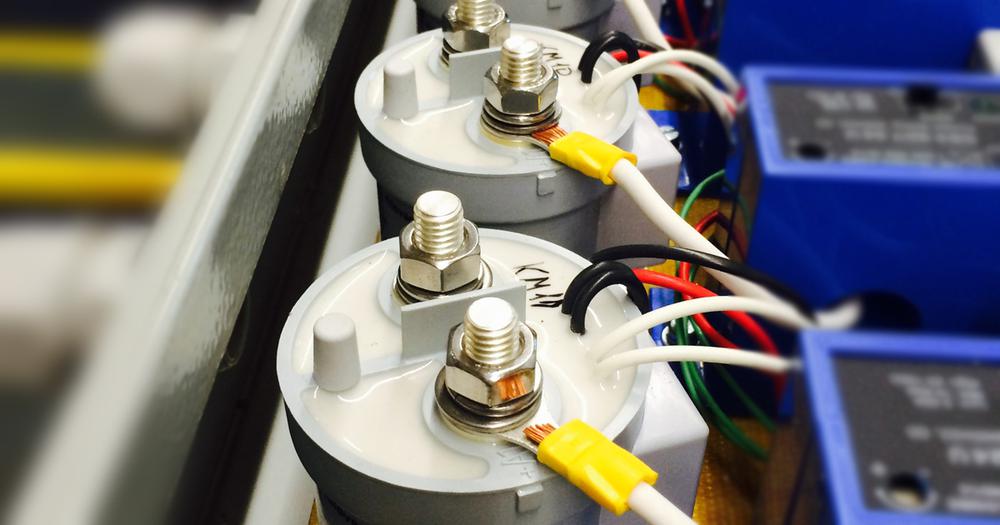
It is designed to be the smallest, of lightest weight, and lowest cost sealed contactor in the industry with its current rating (200A at 900Vdc, 500+A carry at a lower voltage, 2000A interrupt at 320VDC).
If you really need to switch such huge currents, e.g., switch batteries in the backup system or switch power modules in the solar system, it is time to try EV200HAANA. It is also suitable for automotive or marine applications.
Bearing a few important considerations in mind gives you a safe and reliable function of your contactor:
1. Installation
EV contactors can be mounted in any position, and due to the nature of their hermetic seal and isolated enclosure, they can be mounted close to other equipment.However, care must be taken with regard to the connection of the power cables to the main terminals. It is important that the main power connection lugs are mated directly to the terminal seats. Be sure that the hardware stackup is in the proper order and washers and other spacers are not placed between the lug and the terminal seat. Extraneous connection resistance can cause considerable power dissipation and terminal heating at high current carry.
2. Coils, Drive Circuits and Coil Economizing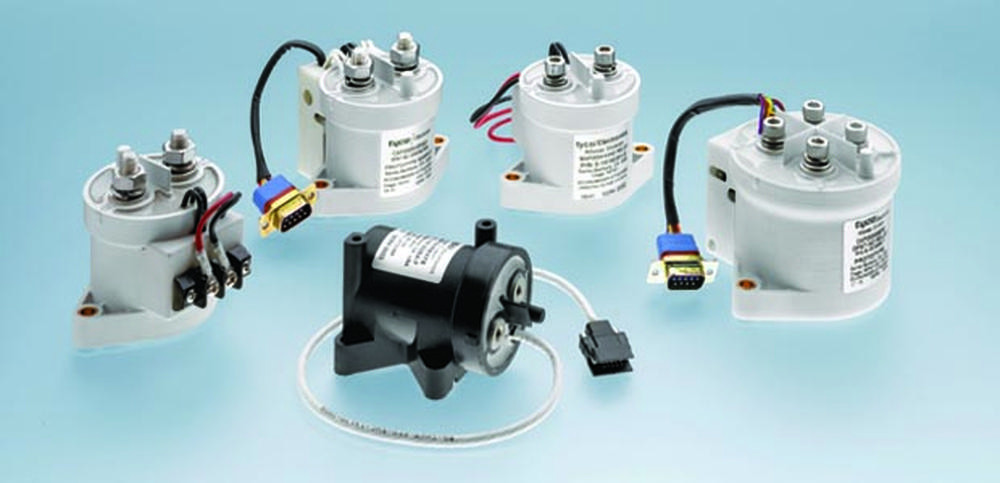

Since the power required to close the contacts is generally much greater than the required holding power, KILOVAC contactors are packaged with low-profile coils that utilise an economiser.
The economiser leaves the full power to the coil during switching but then reduces the power to only 1.7W at 12Vdc for holding, greatly reducing the coil power consumption and heating.
3. Load Types and Power Switching Recommendations
All EV contactors are designed primarily for connection and interruption of resistive loads and slightly inductive loads (L/R<1ms). High currents (up to 2000A) can be interrupted in case of circuit faults, and high continuous currents upwards of 500A can be maintained through closed contacts.
Some important points to consider are:
- Closing into current spikes due to uncharged filter capacitors. Capacitors should be pre-charged whenever it is possible to avoid excessive contact erosion and nuisance welds. Keep inrush current spikes below 650A at all times. Care should also be taken when considering other high-inrush loads such as lamps or motors.
- Large current spikes through closed contacts. Large current spikes through closed contacts over 3000A can sometimes cause spot welding or contact levitation.
- Circuit inductance. Contactor break-arcs generally last as long as it takes to dissipate the stored inductive energy of the load (t (arc) = 1.1*L/R). Longer arcs due to circuit inductance can accelerate contact wear, and in extreme cases, can cause contactor failure.
TE Connectivity recommends to maintain a time constant of less than 1ms for safe operation and maximum life. Contactor life is a function of the power level switched. Higher make/break currents erode contact materials faster and accelerate the loss of dielectric withstanding between the open contacts.
4. Recommended Conductor Sizes for Continuous Current Carry
With regard to a contactor placed in line with the conductors, it is important to make sure that the wire size is sufficient, so the contactor terminals themselves do not overheat, as that leads to a failure of the device. In most cases, the primary path for the removal of heat from the contactor terminals is the conductors themselves. Convection to atmosphere and conduction via the base mountings play a lesser role in this type of contactor due to the nature of the construction.
All EV contactors' recommended maximum power terminal temperature is 150° C continuous and 175° C for 1 hour. TE Connectivity offers adapter bus extensions for applications requiring larger conductors than can practically be installed with a single 4/0 AWG cable and lugs.
For example, for 500A, you need a cable with a cross-section of 150mm2; for 250A, you need a cross-section of 60mm2.
5. Auxiliary Circuit - Configuration SPST-NO
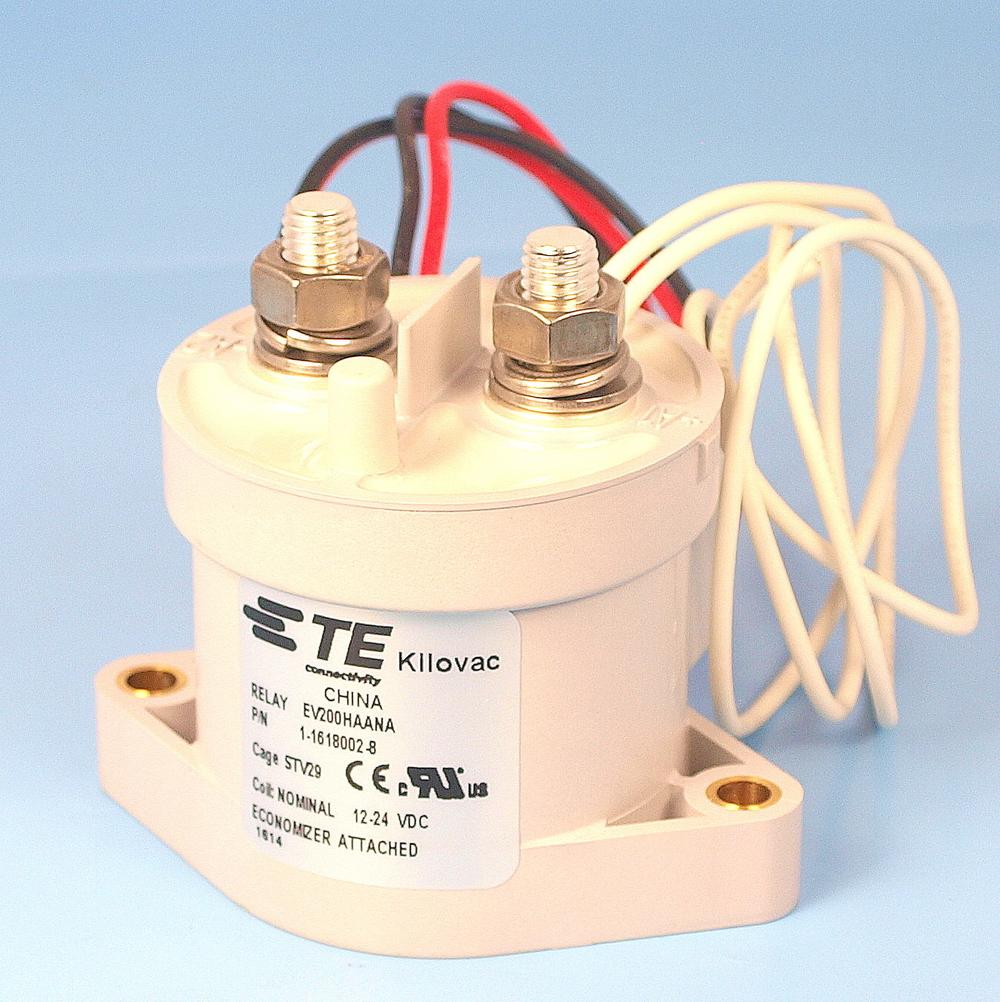
Auxiliary contacts are rated at 125Vac/ 3A or 30Vdc/2A. The auxiliary contact actuating method indicates the true position of the main contacts. The auxiliary contact actuation is directly coupled to the main contact moving bridge. It will not indicate “open” unless both contact gaps of the double-make, Form X contact are fully disconnected.
Remember that the auxiliary contact is mainly a status indication and should not be used to directly power other loads such as a relay coil or high power lamp load.
The high voltage/current contactor EV200HAANA from TE Connectivity is a novelty in our assortment, and you can find it in our stock.
- Contact arrangement: One normally open Polarity Dependent (SPST-NO-DM, double-make)
- Continuous current:200A carry, up to 500A possible with busbar 150mm2, 250A - 60mm2 (1 wire)
- Rating switching voltage: 12 to 900V dc
- Switching power: 200kW
- Auxiliary contact rating: 2A at 30V dc, 3A at 125V ac
- Coil resistance: Economiser circuit, 9 to 36V dc inrush 3.8A, holding 0.13A at 12V dc
- Operate / release time: 15ms / 12ms
- Mechanical life: 1 Million cycles
- Electrical life: dependant on switching voltage and current
- Dielectric strength: 2200V rms
- Temperature: -40°C to +85°C
Are you interested in more information about TE Connectivity products or technical advice on product selection?
Or do you have another question or request? Fill in the following form, we will be happy to help you.
Do you like our articles? Do not miss any of them! You do not have to worry about anything, we will arrange delivery to you.

















